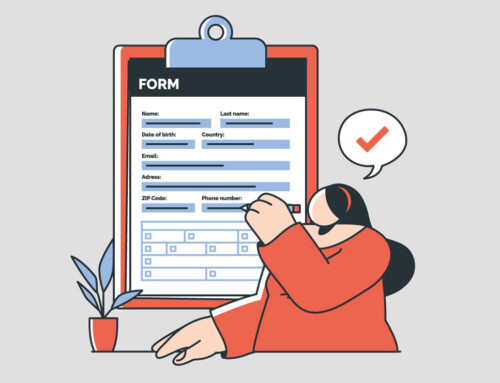Contents
Mastering the Art of Legal Briefs: Comprehensive Guide and Template
A lawyer needs to know how to prepare legal briefs. The main reason is that these documents would help them manage their case more effectively as they can study the main arguments and legal principles all at once. Thus, knowing how to brief a case would lead to streamlining the workflow preventing from wasting time and energy.
What Is a Legal Brief?
A legal brief is a structured document that presents an argument, analyzes legal issues, and persuades a court to favor the writer’s position. It is a critical tool in litigation, providing judges with concise and well-organized insights into a case.
I. Definition and Purpose
A legal brief succinctly outlines the legal principles, relevant facts, and arguments surrounding a case. It ensures clarity and precision in presenting the writer’s stance while adhering to the court’s procedural rules. Its purpose is to aid the court in understanding the legal issues and arguments in a structured format.
II. Key Characteristics of a Legal Brief
A legal brief must objectively convey facts and the applicable law without exaggeration or omission, ensuring an unbiased presentation. Brevity is crucial, as conciseness helps maintain the reader’s focus while covering all relevant points comprehensively. Also, the document must demonstrate analytical depth by analyzing legal precedents and effectively applying them to the circumstances of the case.
III. Relationship to Case Briefs
Understanding how to brief a case is essential to crafting an effective legal brief. A case brief example often serves as a learning tool for breaking down the core components of a judicial opinion, such as identifying key facts, the rule of law, and the court’s rationale. Learning how to write a case brief sharpens analytical skills, forming the foundation for constructing detailed and persuasive legal briefs.

Importance of Legal Briefs in Law Practice
A legal brief is more than a procedural requirement; it is a powerful tool that shapes the direction of legal arguments and the court’s understanding of a case. Its importance lies in its ability to present complex legal issues in a structured, persuasive, and logical format.
I. Educating the Court
A well-prepared legal brief educates the court on the legal issues at hand. It provides a concise summary of the facts, laws, and precedents relevant to the case, ensuring the judge clearly understands the matter. This clarity enhances the court’s ability to rule fairly and effectively.
II. Streamlining Legal Analysis
By distilling complex issues into a focused argument, legal briefs streamline legal analysis for both the writer and the court. A case brief example often demonstrates how to condense large volumes of information into essential points, a skill that translates directly into writing impactful briefs.
III. Providing a Roadmap for Arguments
Legal briefs act as a roadmap for presenting and defending legal arguments. This document becomes a comprehensive guide for practitioners who know how to brief a case effectively, ensuring consistency in oral arguments and responses during proceedings.
IV. Ensuring Fair Hearings
Learning how to write a case brief is critical for attorneys to identify and present the most relevant facts and legal principles. This skill ensures that all arguments are backed by solid evidence and legal precedent, promoting fair and balanced court hearings.
The importance of legal briefs must be balanced. They are pivotal in bridging the gap between intricate legal theory and practical judicial decision-making.
Types of Legal Briefs
Legal briefs come in various forms, each tailored to serve a specific function within the legal process. Understanding the differences between these types helps attorneys craft documents that effectively address a case’s unique demands. Each type plays a distinct role, and mastering its nuances is critical for successful legal practice.
I. Case Briefs
Case briefs are fundamental legal documents used primarily by students and legal practitioners to dissect and analyze judicial opinions. An example case brief typically includes:
- the case’s title,
- a summary of facts,
- the rule of law,
- the court’s reasoning, and
- the final decision.
For law students, understanding how to brief a case builds a solid foundation for legal writing by teaching the skills necessary to identify key facts and apply relevant laws.
II. Trial Briefs
Trial briefs are written submissions presented to the court before or during a trial. These documents outline the legal arguments, evidence, and supporting statutes or precedents relevant to the case. A trial brief aims to persuade the judge to adopt the writer’s interpretation of the law and rule in their favor. This type of legal brief is crucial for framing the issues to be argued during the trial.
III. Appellate Briefs
Appellate briefs are submitted in appellate courts to argue that a trial court’s decision should be upheld or overturned. These briefs are often more detailed than trial briefs, as they require an exhaustive analysis of legal principles, procedural rules, and factual records from the lower court. Learning how to write a case brief equips attorneys to extract essential points from a trial court’s ruling. This skill is critical in crafting compelling appellate arguments.
IV. Memoranda vs. Briefs
Legal memoranda and briefs often overlap in purpose but serve different audiences and contexts. While a legal brief is intended to persuade a judge, a memorandum is usually an internal document that explains a legal issue to colleagues or clients. Both require clear and logical presentation but differ in tone and focus. Understanding these differences is key to drafting the appropriate document for each legal scenario.
Each legal brief fulfills a unique role in the judicial system, from providing precise analyses of judicial opinions to persuading courts during trials and appeals. By understanding these distinctions, legal professionals can tailor their arguments to the specific requirements of each situation.
How to Write a Case Brief
Mastering the art of writing a case brief is a foundational step in legal education and practice. A case brief dissects judicial opinions into concise, organized segments, making analyzing and applying the law easier. This process is invaluable for study, training, or preparation for writing a legal brief.
I. Understanding the Case
Before embarking on writing a case brief, it is essential to deeply comprehend the case by identifying the facts, the legal issue, and the court’s decision. A well-analyzed case brief example serves as a guide, showing how to distill the essence of a case, highlighting the elements most pertinent to legal reasoning. Start by dissecting the facts, discerning the relevant and irrelevant, and concentrating on the facts that directly influence the legal issue. Then, formulate the legal issue as a clear, concise question that the court had to address, as this step sets the stage for the rest of the case brief.
II. Structuring the Case Brief
The structure of a case brief, which you as a legal professional play a crucial role in, follows a standardized format to ensure clarity and consistency. Learning how to brief a case effectively involves adhering to this format while tailoring it to the case’s specifics. Start with the case name and citation, providing the full title and citation for context. Present the facts logically, focusing on those most relevant to the legal issue. Clearly state the legal question the court addressed in the “Issue” section and outline the rule of law or statute applied in the case. Finally, summarize the court’s decision and reasoning in the “Holding and Reasoning” section.
III. Writing the Case Brief
The writing process for a case brief requires meticulous attention to detail and a logical flow, transforming an outline into a polished document that effectively captures the essence of the case. It involves maintaining an objective presentation by summarizing the case neutrally without inserting personal opinions. Each section should build on the previous one to create a cohesive narrative, ensuring a logical flow. Plus, conciseness is key; unnecessary elaboration should be avoided while still addressing all critical points comprehensively.
Crafting a case brief is both an art and a skill. By following a systematic approach and practicing with confirmed cases, legal professionals can create documents that are powerful tools for legal analysis and advocacy. This skill not only aids in preparing a legal brief but also sharpens the ability to engage with legal issues at a deeper level.
Key Components of a Legal Brief
A well-crafted legal brief is built upon essential components that ensure clarity, persuasiveness, and adherence to legal standards. Each section serves a specific purpose, forming a cohesive document that effectively presents legal arguments.
I. Introduction
The introduction of a legal brief sets the stage by outlining the key issues and providing a clear roadmap of the arguments to follow. As the reader’s first impression, it must be both precise and engaging. Begin by clearly stating the central legal question that the court must address, ensuring the reader immediately understands the focus of the argument. Follow this with a concise overview of the main points, establishing expectations for the discussion and analysis unfolding in the brief.
II. Statement of Facts
The statement of facts provides an objective summary of the case’s relevant details, serving as a foundation for the legal analysis. This section should be comprehensive yet concise, including only those facts that directly impact the legal issue at hand. To maintain credibility, it is essential to avoid bias and present the facts exactly as they are. Emphasis should be placed on details that are directly tied to the legal principles discussed in the argument. Referring to a case brief example can be helpful in identifying which facts are most pertinent to include.
III. Legal Issues and Rules
This section identifies the legal issues and the rules of law that apply. Learning how to brief a case involves distilling these elements to their essence, which is also critical in drafting this section of a legal brief. The issues should be phrased as specific questions the court must address, ensuring clarity and precision. The section should clearly articulate the statutes, precedents, or legal principles that guide the resolution of these issues.
IV. Legal Argument
The legal argument is the heart of the brief, where the law is applied to the facts of the case through logical and persuasive reasoning to advocate for the desired outcome. This involves referencing similar cases to demonstrate how their rulings support the argument, organizing points to create a seamless flow of reasoning, and preemptively addressing potential counterarguments to enhance credibility and strengthen the overall argument.
Case Brief Example: A Practical Overview
A well-drafted case brief concisely analyzes judicial opinions and is invaluable for legal professionals. By studying a case brief example, attorneys and students can better understand how to dissect legal opinions and apply these skills to drafting a legal brief or other legal documents.
I. Purpose of a Case Brief
A case brief simplifies a complex court opinion into an accessible format, emphasizing the key components essential for understanding and analysis. A case brief focuses on the core facts, legal issues, and reasoning, aiding practitioners in grasping the essence of the case. It provides a reference for constructing persuasive arguments in a legal brief or during court proceedings.
II. Components of a Case Brief Example
A well-structured case brief contains specific sections that present the case logically and systematically.
- Title and Citation: The title includes the parties’ names, while the citation provides the case’s location in legal reporters.
- Statement of Facts: The facts are presented objectively, focusing on the events relevant to the legal issues.
- Legal Issues: This section frames the questions the court was asked to decide. For instance, how to brief a case often involves turning the legal issues into concise, specific inquiries.
- Rule of Law: The rule of law summarizes the legal principles or statutes applied by the court in resolving the case.
- Court’s Reasoning: This includes the rationale behind the court’s decision, explaining how the facts and legal principles were applied.
- Conclusion (Holding): The holding states the court’s final decision on the legal issues presented.
III. Practical Steps for Drafting a Case Brief
Writing a case brief requires a structured approach to address all critical aspects effectively. Start by carefully reading the case to understand the judgment and differentiate between relevant and irrelevant details. Organize key information using clear headings and subheadings to separate facts, legal issues, and reasoning. Focus on clarity by keeping the brief concise and avoiding unnecessary elaboration while thoroughly covering all essential elements.
IV. Importance of Case Briefs in Legal Writing
Case briefs are educational tools and practical references in professional practice. They ensure a clear understanding of precedents and reasoning, which forms the basis for constructing comprehensive and persuasive legal documents.
By studying a detailed case brief example and practicing summarizing judicial opinions, legal professionals can sharpen their skills in analysis, advocacy, and writing. These abilities are integral to successfully drafting compelling legal briefs and advancing well-reasoned arguments in court.
Best Practices for Writing Effective Legal Briefs
Crafting a compelling legal brief requires skill, clarity, and attention to detail. Following best practices can significantly enhance the quality of your work, ensuring that your arguments are persuasive and that the document meets professional standards.
I. Prioritize Clarity and Precision
A legal brief must communicate its arguments clearly and concisely. Judges and legal professionals often read numerous briefs, so clarity ensures your arguments are understood without unnecessary effort. Avoid legalese where possible. Simplicity improves comprehension and ensures your points are accessible. Logical organization makes it easier for the reader to follow your argument. Break the brief into clear sections and use headings or bullet points where appropriate. Review your brief to eliminate redundancy and ensure every word contributes to your argument.
II. Cite Relevant Authorities
Strong legal briefs rely on precedents and statutes to substantiate arguments. Knowing how to brief a case helps identify the most relevant authorities to include in your brief. Ensure all references are correctly cited and adhere to the required citation format. Prioritize cases with facts or rulings closely aligned to your argument. A case brief example can be an excellent resource for understanding how to reference and apply precedent effectively.
III. Build a Logical Argument
The core of a legal brief lies in its argument. A strong argument is built on a logical progression of ideas that connect the facts of the case to the applicable laws. A strong argument begins by clearly stating the legal principles or statutes governing the case and then explaining how the facts align with these principles to support the desired outcome. To solidify the argument, it is crucial to identify potential weaknesses and refute them effectively, thereby reinforcing the overall position and demonstrating why the court should rule in your favor.
IV. Proofread for Accuracy
Accuracy in content and presentation is crucial in legal writing. Errors in your legal brief can undermine your credibility and distract you from your arguments. To maintain precision, verify that all facts and case details are correct, ensure compliance with the court’s formatting and submission rules, and carefully review grammar and style to eliminate typos, grammatical mistakes, and awkward phrasing that could detract from the professionalism of your brief.
V. Practice with Case Briefs
Learning how to write a case brief is essential to master the art of legal briefs. Practicing with real cases refines your analytical and writing skills. Case briefs teach you to distill complex opinions into essential points, a skill directly applicable to drafting legal briefs. Reviewing well-written legal briefs and case brief examples provides insights into practical techniques and common pitfalls to avoid.
By following these best practices, legal professionals can ensure that their briefs are clear, persuasive, and impactful. Effective legal writing is not just about presenting arguments; it is about delivering them in a way that resonates with the court and achieves the desired outcome.
Legal Brief Template for Quick Reference
Using a structured template is crucial for crafting a well-organized legal brief. Templates help ensure all key components are included while allowing the content to adapt to specific cases. A good template serves as a guide for both new and experienced legal professionals, streamlining the drafting process.
I. Essential Sections of a Legal Brief
A comprehensive legal brief consists of standard sections that address all aspects of the case. Each section plays a critical role in presenting the argument clearly and persuasively.
- Title and Introduction:
- The title includes the case name and citation, establishing context for the brief.
- The introduction outlines the purpose of the brief and highlights the key legal issues.
- Statement of Facts: Present an objective summary of relevant facts, avoiding personal opinions or extraneous details.
- Legal Issues: Define the specific legal questions the court must address, phrased concisely.
- Arguments: Present your analysis of the legal issues supported by precedents, statutes, and logical reasoning.
- Conclusion: Summarize the arguments and clearly state the relief sought.
II. How to Use a Case Brief Example as a Model
A case brief example provides a practical reference for structuring your legal brief. It demonstrates how to organize content and includes all necessary elements. Examine the organization of sections and the flow of arguments. Also, modify the example to align with your case’s specific facts, issues, and legal principles.
III. Step-by-Step Guide for How to Brief a Case
Learning how to brief a case is foundational to mastering legal brief writing. You can create a template that supports thorough analysis by breaking down judicial opinions into their core components. Start by identifying the key facts that are directly relevant to the legal issue, then focus on the rule of law by highlighting the legal principles applied in the case. Finally, analyze the court’s reasoning to understand how the decision was reached and its implications for strengthening your argument.
IV. Customizing a Template for Your Legal Brief
While templates provide structure, customization is key to creating a compelling legal brief that addresses the specific needs of your case. To achieve this, ensure your brief adheres to the formatting and procedural rules of the jurisdiction, emphasize key points by tailoring arguments to highlight the most persuasive aspects, and incorporate relevant precedents from similar cases to strengthen your position.
V. Benefits of Using a Template
A template simplifies writing a legal brief by offering a ready-made framework. It ensures that no critical sections are overlooked and allows you to focus on the content rather than the structure. It enhances efficiency by saving time with a predefined format, promotes consistency across briefs for more straightforward review and comparison, and upholds professionalism by ensuring the document is well-organized and adheres to best practices in legal writing.
Learning how to write a case brief and using a structured template are complementary skills that enhance legal writing. By combining these tools, legal professionals can create clear, concise, and compelling briefs, effectively advocating for their clients in any legal context.
The Power of a Well-Crafted Legal Brief
A well-written legal brief is a cornerstone of effective legal advocacy. Whether you are summarizing key facts, applying legal principles, or presenting persuasive arguments, a legal brief provides the structure and clarity needed to communicate effectively with the court. By studying a case brief example and practicing how to brief a case, legal professionals sharpen their analytical skills and gain the tools needed to draft impactful briefs. Each section of the document, from the introduction to the conclusion, is vital in presenting a cohesive and compelling case.
Learning how to write a case brief is essential in developing the expertise required to produce high-quality legal documents. Case briefs teach the art of distilling complex judicial opinions into their fundamental elements, which can be applied to real-world legal briefs. By adhering to best practices, leveraging templates, and understanding the nuances of legal writing, attorneys can ensure their briefs meet procedural requirements and stand out as persuasive and professional arguments in the courtroom.
Elevate Your Legal Briefs with RunSensible’s Smart Tools
Crafting flawless legal briefs requires expertise and the right tools to enhance efficiency and precision. RunSensible offers advanced features designed to simplify your workflow and keep you organized. With its legal document automation, you can create standardized templates for briefs, case summaries, and client correspondence, ensuring consistency and accuracy in every document. The integrated calendaring system keeps you on top of deadlines by syncing with your case management system and providing smart reminders so you never miss a filing date. In addition, RunSensible’s centralized case management allows you to access case details, research, and client files in one secure platform, enabling seamless preparation of compelling arguments. To further streamline your practice, its e-signature functionality simplifies client approval processes by allowing digital signatures directly within the platform. With these tools, RunSensible empowers you to produce exceptional legal briefs while optimizing your time and resources.
FAQs
1. What is the primary purpose of a legal brief?
A legal brief is a written document that presents legal arguments, facts, and relevant laws to persuade the court to rule in favor of a specific position. It serves as a structured and detailed case explanation, guiding the judge through the legal reasoning and desired outcomes.
2. How does a case brief example help write a legal brief?
A case brief example provides a simplified breakdown of a judicial opinion, highlighting its key components like facts, legal issues, and court reasoning. By studying these examples, legal professionals can develop analytical skills to summarize complex cases and apply this knowledge to drafting comprehensive legal briefs.
3. What is the difference between learning to brief a case and writing a legal brief?
Briefing a case involves analyzing and summarizing a court decision to understand its key elements, such as facts, issues, and rulings. On the other hand, writing a legal brief requires applying this analysis to advocate for a particular legal position, combining case law, facts, and arguments in a persuasive manner.
4. Why is knowing how to write a case brief essential for legal practice?
Learning how to write a case brief helps legal professionals master the skill of distilling complex information into its essential components. This ability is critical for understanding case law, preparing for court, and creating clear and persuasive legal briefs that effectively communicate a case’s merits.
Disclaimer: The content provided on this blog is for informational purposes only and does not constitute legal, financial, or professional advice.







